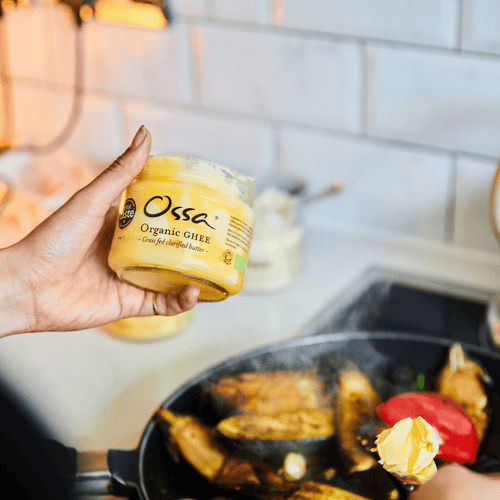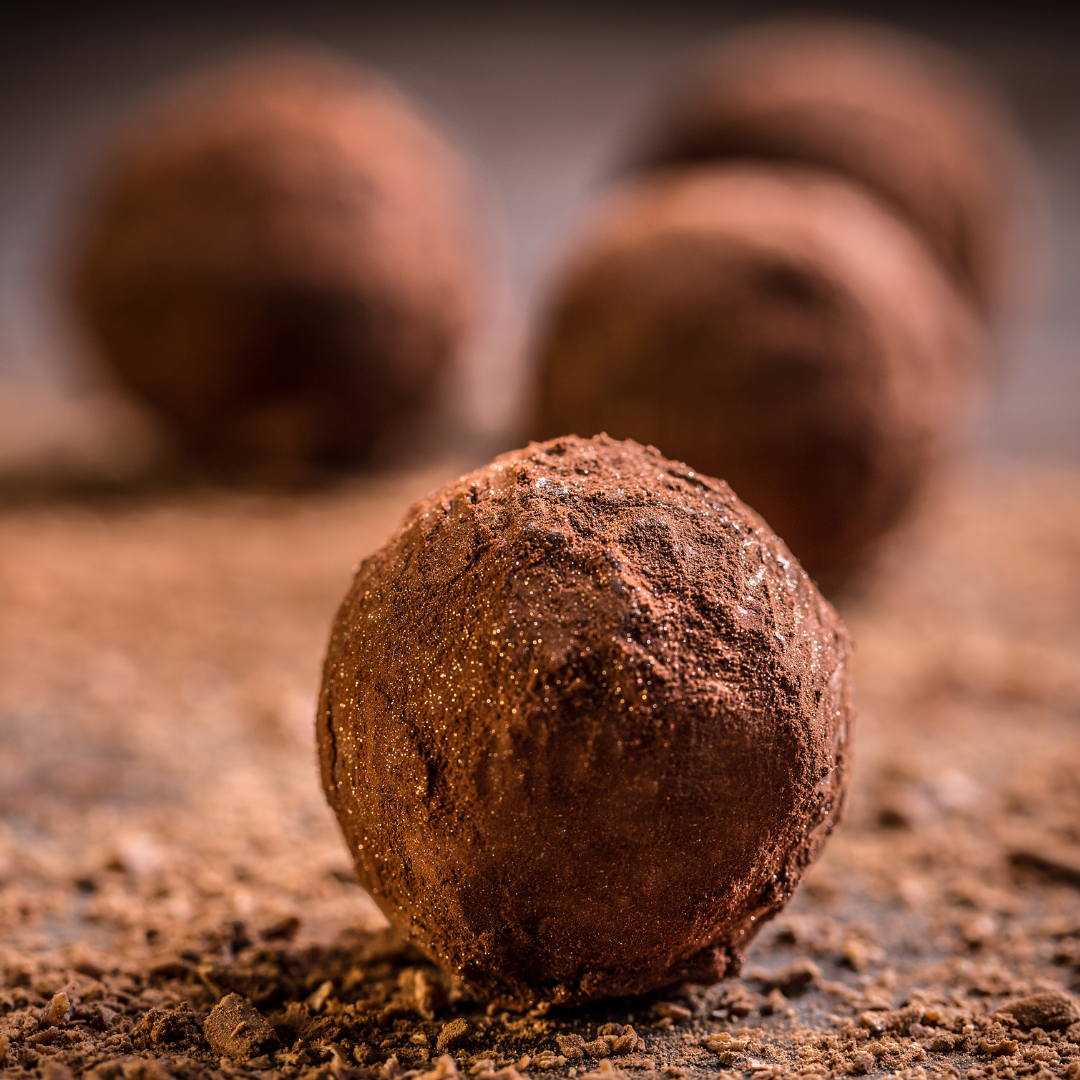During the busiest time of the year, with the best and most significant discounts automatically applied, please note that discount codes and free shipping are not available during this period
Non-toxic cooking is a growing trend in the culinary and health and food world alike, as people become more aware of the harmful chemicals that can leach into their food when using certain cookware and utensils as well as certain ingredients. In this blog we'll explore what non-toxic cooking is, why it matters, and some of the best practices for cooking all natural and nourishing foods.
What is Non-Toxic Cooking?
Non-toxic cooking refers to the use of cookware, utensils, and other tools and ingredients that do not contain harmful chemicals or materials that can leach into food. Traditional cookware and utensils may contain toxic substances such as lead, cadmium, PFOA, and PFAS, which can cause a range of health problems if ingested over time. Non-toxic cookware, on the other hand, is made from materials that are safe, natural, and do not contain any harmful chemicals.
Why in Non-Toxic Cooking Important?
Cooking with non-toxic materials is important for several reasons. Firstly, it ensures that your food is safe and healthy to eat, without any harmful substances that can accumulate in your body over time (aka toxic load). Secondly, it reduces your exposure to chemicals that can be harmful to your health and the environment. Thirdly, non-toxic cookware and utensils are often more durable and long-lasting than traditional materials, reducing the need for frequent replacements and waste - better for you and the planet!
Best Practices for Non-Toxic Cooking
- Choose Non-Toxic Cookware: When choosing cookware, look for options made from non-toxic materials such as stainless steel, cast iron, ceramic, glass, or natural clay. Avoid materials such as non-stick coatings, aluminum, or copper, which can contain harmful chemicals.
- Avoid Plastic Utensils: Plastic utensils can release harmful chemicals when exposed to heat, so it's best to avoid them. Instead, opt for utensils made from wood, bamboo, silicone, or stainless steel.
- Use Natural Cleaners: Many traditional cleaning products contain harsh chemicals that can linger on cookware and utensils. Use natural cleaners such as vinegar, baking soda, or lemon juice to clean your kitchen tools and surfaces.
- Be Mindful of Temperature: Some non-toxic materials, such as glass or natural clay, may not be able to withstand extreme temperatures. Be mindful of the temperature range of your cookware and utensils to avoid cracking or breakage.
- Store Food Properly: Proper food storage can also help reduce your exposure to toxins. Avoid storing food in plastic containers or wrap, and opt for glass or stainless steel containers instead.
- Remember it's not just what your food is but what you're cooking with. Use natural fats with high smoke points and avoid refined seed and vegetable oils especially for cooking.
Following the growing movement towards non-toxic cookware, more and more people are opting to use traditional cooking fats like ghee and tallow instead of refined vegetable oils. So let's talk about these non-toxic cooking fats why they are a healthier option, and why you should consider making the switch!
What are Non-Toxic Cooking Fats?
Non-toxic cooking fats are natural fats that are derived from animal or plant sources. Examples include ghee, tallow, lard and coconut oil. Unlike refined vegetable oils, these fats are minimally processed, and do not contain harmful chemicals or additives and they also remain stable at a high heat.
Why Choose Non-Toxic Cooking Fats?
- They are More Nutritious: Non-toxic cooking fats are often more nutritious than refined vegetable oils. For example, ghee contains vitamins A, D, E, and K, as well as essential fatty acids that are important for maintaining healthy skin, hair, and nails. Tallow is rich in vitamin E and conjugated linoleic acid (CLA), which has been shown to reduce inflammation and improve overall health.
- They are Stable at High Temperatures: Non-toxic cooking fats are also more stable at high temperatures, which makes them ideal for cooking and frying. Refined vegetable oils, on the other hand, can break down and release harmful free radicals when exposed to high heat.
- They are Less Processed: Non-toxic cooking fats are minimally processed, and do not contain harmful chemicals or additives. Refined vegetable oils, on the other hand, are often heavily processed and may contain chemicals such as hexane, which is used to extract the oil from the seeds.
- They are Environmentally Friendly: Non-toxic cooking fats are often sourced from sustainable and environmentally friendly sources. For example, tallow and lard are derived from the fat of animals that have been raised on pasture, while coconut oil is produced from the fruit of the coconut palm, which is a renewable resource.
Why Avoid Refined Vegetable Oils?
- They are High in Omega-6 Fatty Acids: Refined vegetable oils are often high in omega-6 fatty acids, which can cause inflammation when consumed in excess. This can lead to a range of health problems, including heart disease, diabetes, and obesity.
- They are Highly Processed: Refined vegetable oils are heavily processed, and may contain harmful chemicals and additives. For example, hexane is often used to extract oil from the seeds, and can leave behind residues that are harmful to human health.
- They are Unstable at High Temperatures: Refined vegetable oils are also unstable at high temperatures, and can break down and release harmful free radicals when exposed to heat. This can lead to oxidative stress and damage to cells and tissues.
- They are Often Genetically Modified: Many refined vegetable oils are derived from genetically modified crops, such as soybeans, corn, and canola. This raises concerns about the potential health and environmental impacts of genetically modified organisms (GMOs).
The Benefits of Cooking with Ghee:
Non-toxic cooking fats such as ghee and tallow have several health benefits over refined vegetable oils. Ghee is a traditional cooking fat that is commonly used in Indian cuisine. It is made by simmering butter until the water content evaporates, leaving behind the pure butterfat. Ghee has a high smoke point, which makes it ideal for cooking and frying. It also contains vitamins and minerals that are beneficial for health, such as vitamin A, D, E, and K.
Benefits of Ghee:
- Rich in Vitamins and Minerals: Ghee contains fat-soluble vitamins A, D, E, and K, which are important for maintaining healthy skin, hair, and nails. It is also rich in minerals such as calcium, phosphorus, and magnesium.
- Supports Digestive Health: Ghee is a rich source of butyric acid, a short-chain fatty acid that supports the health of the intestinal lining. This can help to improve digestion and reduce inflammation in the gut.
- Supports Immune System: Ghee contains medium-chain fatty acids (MCFAs), which have been shown to support the immune system and help fight off infection.
- High Smoke Point: Ghee has a high smoke point of around 485°F (252°C), which makes it ideal for cooking and frying. It does not break down and release harmful free radicals when exposed to high heat.
- Lactose and Casein Free: Ghee is made by removing the milk solids from butter, which makes it lactose and casein-free. This makes it suitable for people with lactose intolerance or dairy allergies.
The benefits of cooking with Tallow
Tallow is another traditional cooking fat that is derived from the fat of beef or lamb. It has a high smoke point, which makes it ideal for cooking and frying. It is also rich in vitamin E and conjugated linoleic acid (CLA), which has been shown to help lower inflammation.
Benefits of Tallow:
- Rich in Nutrients: Tallow is rich in vitamins E, D, and K, which are important for maintaining healthy skin, bones, and teeth. It also contains CLA, a type of healthy fat that has been shown to reduce inflammation and improve overall health.
- High Smoke Point: Tallow has a high smoke point of around 420°F (216°C), which makes it ideal for cooking and frying. It is also stable at high temperatures, which means it does not break down and release harmful free radicals.
- Environmentally Friendly: Tallow is a sustainable and environmentally friendly cooking fat, as it is derived from the fat of animals that have been raised on pasture.
- Easy to Digest: Tallow is easy to digest and has been shown to be beneficial for people with digestive issues such as inflammatory bowel disease (IBD) and irritable bowel syndrome (IBS).
- Versatile: Tallow has a neutral flavor and can be used in a variety of dishes, from frying and roasting to baking and sautéing.
Why not try our bundle pack of Ghee and Tallow and enjoy the benefits with some of our amazing grass fed fat fuelled recipes!





